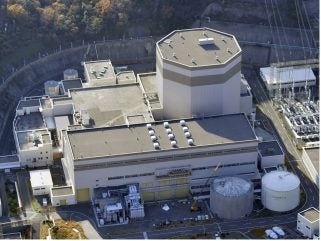
A team of investigators working for Japan’s Nuclear Regulation Authority (NRA) say they cannot rule out the possibility that a seismic fault near unit 2 of Japan Atomic Power Company’s (JAPC’s) Tsuruga NPP in Fukui Prefecture may be active.
The Tsuruga NPP, around 300 km west of Tokyo, comprises two units. Unit 1, a boiling water reactor, began operation in 1970, and unit 2, a 1,160 MWe pressurized water reactor started up in 1987. The existence of the fault, called the K Fault, has been confirmed at a location about 300 metres north of the unit 2 reactor building. JAPC hopes to restart the reactor, but must first prove that the fault does not extend directly beneath the reactor building.
According to NRA’s new regulatory standards, introduced after the 2011 Fukushima Daiichi disaster, if an active fault that could cause an earthquake runs directly beneath an important facility such as a reactor building, the plant cannot operate. At issue are questions of whether the fault is active, and whether it extends directly under the building. JAPC argued that the fault is not active, based on the results of a drilling survey and volcanic ash analysis, among other data. However, the NRA screening team said that there is a possibility that the fault is active, as the complex layering of soil deposits in the area makes it difficult to determine the fault’s type.
This has been a contentious issue since 2012, when NRA announced that its survey of a second fault zone directly beneath the Tsuruga 2 reactor was likely to be seismically active. NRA said at that time that the reactor may have to be decommissioned, although the agency only has the authority to bar the plant from restarting.
JAPC then submitted an open letter NRA asking for clarification of its views which were “not fully explained, lack scientific basis, and are difficult to understand”. JAPC maintained that the fracture zone at the site is not an active fault as the 95,000-year-old strata resting on the top has not been displaced.






